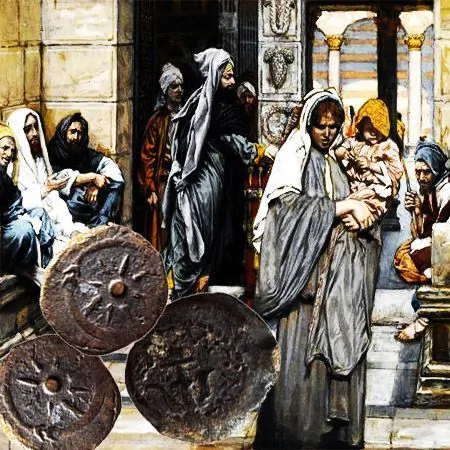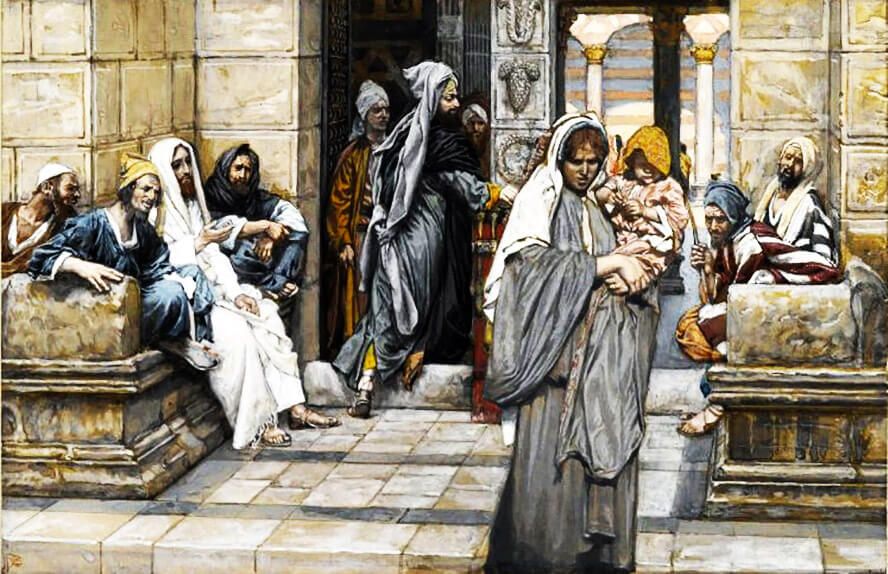Story of ‘The Widow’s Mite’

The Widow’s Mite
What we call the “Widow’s Mite” is actually a bronze prutah (small denomination) from the Hasmonean period, minted under Alexander Jannaeus (103-76 B.C.).
This is an interesting coin which on one side has a design of star with paleo-Hebrew characters in between the rays which spell out the Hebrew name of Alexander Jannaeus, Yehonatan. On the other side, there is an anchor with a Greek inscription reading, “Alexander Jannaeus, the king” on the outside of the anchor.
The symbol of the anchor was used to commemorate Alexander Jannaeus’ conquest of the coastal plain, expanding the Hasmonean territory to the Mediterranean. The star was a common symbol in the Ancient Near East which could refer to a number of ideas related to the heavens or counting the seasons.
The use of both paleo-Hebrew (ancient Hebrew used during the time of King David), and Greek indicates the society of the second century B.C. This coin would please both the supporters of Hellenism and the conservatives who existed during this time. It is however, a very controversial coin.

Before Alexander Jannaeus, the Hasmonean rulers only referred to themselves as the high priest on their coinage, not king. There is no doubt that taking on this title angered many of the conservative group, which could be why many of these coins were re-struck.
So, why do we call this coin the “Widow’s Mite?” Unlike the silver coins of the day, which were re-minted each year, and for every new ruler, the small bronze coins were reused during later periods.
These coins were massed produced in the Hasmonean period throughout Israel, and they are found in later excavations, including the first century (time of Jesus). We know that these coins were used as the small change during Jesus’ time, which makes this coin the most likely candidate for Jesus’ parable of the widow’s offering in Luke 21. This faceless, unimpressive Jewish coin was all the widow had, which makes this such a great illustration of Jesus’ teaching.



Leave a Reply
You must be logged in to post a comment.